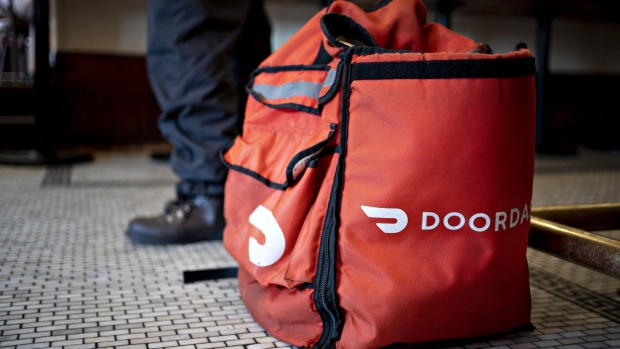Feb 17, 2022
DoorDash surges more than 30% on record-high order numbers
, Bloomberg News

DoorDash Inc. soared 25 per cent in early trading on Thursday after the company reported a record number of people ordered from the food-delivery app in the fourth quarter, showing that pandemic eating habits are sticking despite COVID-19’s fading threat.
Customers placed 369 million orders in the period, representing a 35 per cent increase from a year earlier. People were also ordering more often and the value of those orders increased 36 per cent to US$11.2 billion. Wall Street expected US$10.6 billion.
“There was a lot of skepticism about whether people were going to keep using this product with reopenings and we’re exiting the year with a record number of users,” Chief Financial Officer Prabir Adarkar said in an interview. “The benefit of convenience is enduring.”
The pandemic supercharged consumers’ affinity for takeout when coronavirus lockdowns cut back indoor dining and was a boon for DoorDash, which went public in 2020 on the back of triple-digit growth in its core food-delivery business. DoorDash, which comprises 58 per cent of the U.S. food-delivery sales, has parlayed its success into other categories like convenience-store items and groceries, elevating its ambitions to becoming a logistics giant.

Revenue rose 34 per cent in the fourth quarter to US$1.3 billion, the San Francisco-based company said Wednesday in a statement. That was in line with analysts’ average projection of US$1.29 billion, according to data compiled by Bloomberg. The company projected gross order value of US$11.4 billion to US$11.8 billion in the current quarter, based on continued growth in the U.S. restaurant marketplace as well as investment in new categories and international markets.
“The strong outperformance, in addition to the raised guidance, reflect both the stickiness of the food delivery consumer who is becoming habituated to the service,” and “management’s conservatism in the face of uncertainty,” Truist Securities analyst Youssef Squali wrote in a note, reiterating his buy rating on the stock.
The shares rose to US$118.36 in early trading in New York, putting them on course to rise back above their listing price.
But DoorDash also cautioned investors that “significant uncertainty remains around several factors, including: the ongoing COVID pandemic and the impact of labor shortages, inflation, and other macroeconomic factors,” the company said in a letter to shareholders.
To help hedge any slowdown in delivery demand, DoorDash has “aggressively” invested in expanding its global footprint and new services which contributed to lower-than-expected adjusted earnings before interest, tax, depreciation and amortization of US$47 million. Analysts had forecast US$73.8 million. “We’re focused on maximizing scale,” Adarkar said. “We’re using profits from the core U.S. restaurant business to grow new areas.”
In November, DoorDash acquired Finnish food-delivery company Wolt Enterprises Oy for about US$8.1 billion, its biggest purchase ever, in a bid to boost business outside the U.S. International orders grew “substantially faster” than domestic ones in the fourth quarter, DoorDash said.
Though consumer demand for meal-delivery has remained largely resilient, competition in the sector has intensified, and bolstering orders in non-food categories are key to sustain growth, according to Bloomberg Intelligence analyst Mandeep Singh. DoorDash launched an ultrafast grocery delivery pilot in December to tap into the instant-commerce boom made popular by startups like Gopuff, Gorillas Technologies GmbH and Getir. The number of users placing an order in non-restaurant services has been steadily growing and reached 14 per cent in December, Adakar said.
The results suggest that the “company’s expansion into new delivery verticals is aiding its volume growth and traction with its DashPass subscription offering,” said Bloomberg Intelligence analyst Mandeep Singh.
DashPass reached more than 10 million users at the end of 2021, the company said. Membership services have gained traction as a way to boost customer retention and increase basket sizes with competitors like Uber Technologies Inc. and Instacart Inc. launching products of their own.




